How Does A Cat React To A Crying Owner
Cats have long been recognized as independent and enigmatic creatures, often regarded for their aloof nature. However, these fascinating beings are not immune to displaying empathy and concern towards their human companions. One particular scenario that can evoke a unique response from cats is when their owner is crying. It is intriguing to explore how feline companions react in such circumstances and the possible underlying reasons behind their behavior. In this blog post, we will delve into the various ways cats may respond to a crying owner, shedding light on their intuitive and sometimes surprising reactions. Understanding these behaviors can provide a deeper appreciation for the emotional capabilities of our feline friends and strengthen the bond between owners and their beloved cats.
Understanding cats' sensitivity and empathetic nature (2)
Cats have often been stereotyped for their independent and aloof behavior, but many cat owners can attest to their furry companions' surprising sensitivity and empathetic nature. When faced with a crying owner, cats can display various reactions that highlight their intuitive understanding of human emotions.
Firstly, it is important to note that cats are highly perceptive creatures. They have keen senses that allow them to pick up on subtle changes in their environment, including shifts in their owner's emotional state. When a cat notices their owner crying or in distress, they may instinctively approach them, offering their presence as a source of comfort.
One way cats may react to a crying owner is through physical affection. They might curl up beside their owner, gently nuzzling or purring to provide reassurance. This behavior demonstrates their understanding that physical contact can be soothing and comforting during times of emotional distress. Cats have a unique ability to sense their owner's need for comfort and offer it in their own gentle and tender way.
Moreover, cats are known to be excellent observers of human behavior. This innate skill enables them to read their owner's body language and interpret their emotional cues. When a cat detects sadness or crying, they may demonstrate an increased level of attention and engagement. Some cats might try to make eye contact or tilt their heads in a curious manner, seemingly trying to understand or offer empathy to their crying owner.
In addition, it's not uncommon for cats to use their vocalizations as a means of communication when responding to a crying owner. They may meow softly or make peculiar chirping sounds, which can be interpreted as an attempt to offer comfort or seek attention. Their vocalizations serve as a way to acknowledge their owner's distress and express solidarity during difficult moments.
Overall, it is clear that cats possess an empathetic nature and an ability to understand and respond to their owners' emotions, even when they are crying. Their sensitivity and intuitive behavior make them exceptional companions, offering support and comfort during challenging times. It is important for cat owners to recognize and appreciate their feline friends' unique ability to provide solace, reminding us that companionship extends far beyond words and into the realm of emotional connection.
Initial reactions: Observing a cat's behavior when their owner starts crying (3)
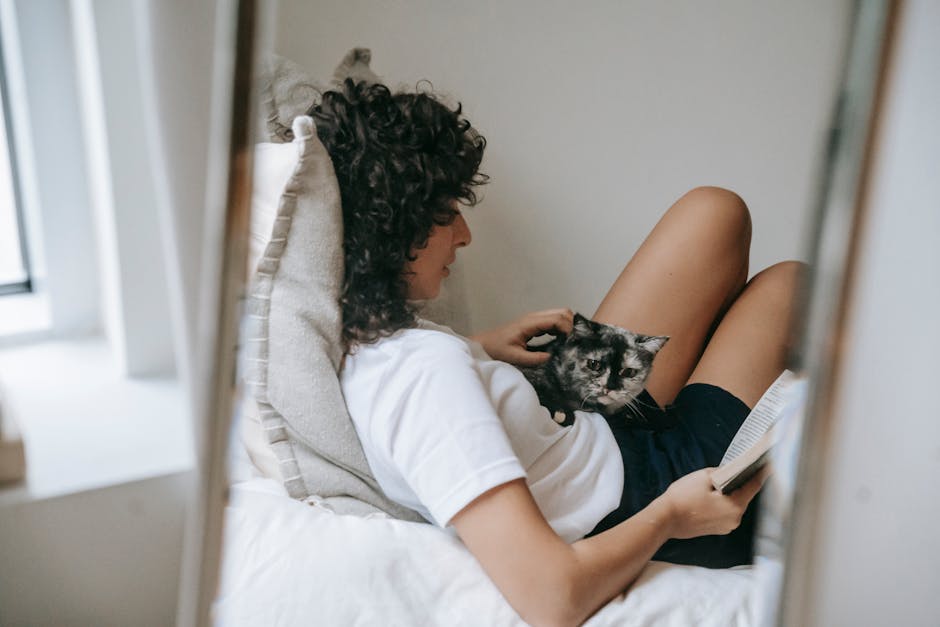
When it comes to the emotional well-being of their owners, cats can exhibit surprising levels of empathy and concern. Many cat owners have experienced their furry companions rushing to their side when they are upset or crying. In this section, we will delve into the initial reactions of cats when their owners start crying, shedding light on the intriguing behavior exhibited by our feline friends.
One common initial reaction is curiosity. As their owner lets out tears and distressing sounds, cats often become highly interested in the unusual behavior. They may approach cautiously, their eyes fixed on their owner's face, trying to understand the source of their distress. This curiosity can be seen in their body language, with their ears pricked forward and their tails held high, exhibiting a heightened level of attentiveness.
Another initial reaction cats may display is confusion. Cats are known to be sensitive to changes in their environment, so when their owner suddenly starts crying, it may be a novel situation that they are unsure how to handle. They may look back and forth between their owner's face and the surrounding environment, trying to make sense of the situation. This confusion can be observed in their dilated pupils and twitching whiskers as they attempt to process the emotional state of their owner.
Additionally, some cats may exhibit signs of concern or distress themselves in response to their crying owner. They may start to meow softly or even growl, expressing their own feelings of unease and discomfort. This concern can be understood as a protective instinct, where cats try to comfort their owners in distress by vocalizing their own emotions. Some cats may even extend physical support by rubbing their body against their owner or gently pawing at them, as a way to offer solace.
In conclusion, initial reactions of cats when their owners start crying can vary from curiosity and confusion to concern and distress. As sentient beings, cats are not indifferent to the emotional state of their owners and often exhibit behaviors that reflect their understanding of human emotions. These initial reactions are just the first glimpse into the complex and fascinating bond that exists between cats and their owners.
Approaches to offer comfort: Discussing various ways cats may respond (4)
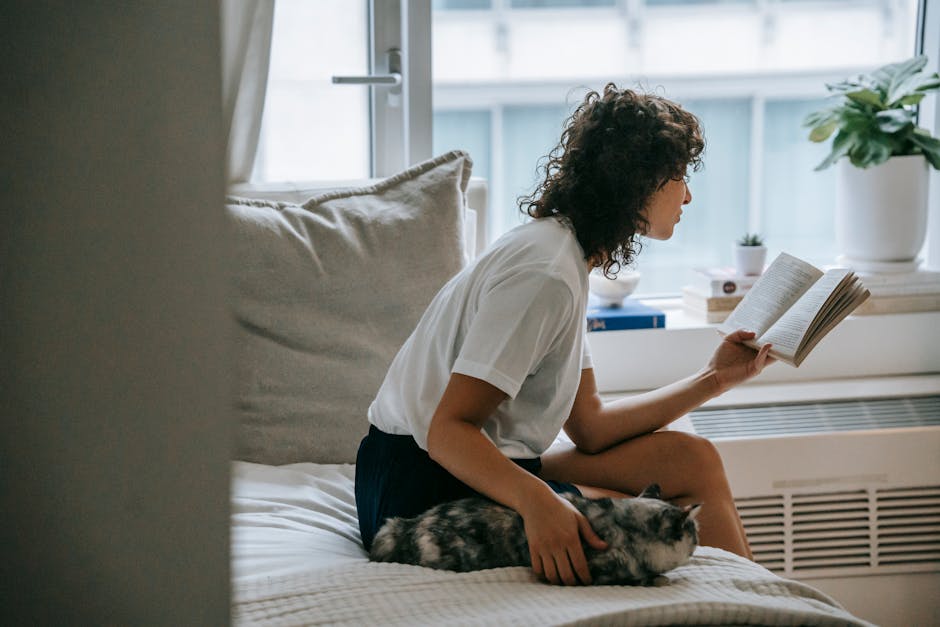
Cats are known for their ability to be empathetic, and they can often sense when their owner is upset or crying. While each cat may have its unique way of offering comfort, there are several common approaches that cats may take to respond to their crying owner.
1. The Cuddle Buddy: Some cats are natural cuddlers and will immediately snuggle up with their owner when they see tears. They may lean into their owner's body, purr, or gently knead their paws, providing a warm and comforting presence. This physical contact can be soothing for both the cat and their owner, fostering a sense of security and emotional support.
2. The Watchful Guardian: Other cats may opt for a more observant role, carefully monitoring their owner from a distance. They may sit nearby, keeping a watchful eye, and emitting soft purrs or chirps intermittently. Although not directly engaging, their presence alone can be reassuring, reminding their owner that they are not alone in their distress.
3. The Distraction Dynamo: Some cats have a knack for diverting their owner's attention from their sadness. They may try to play or engage in playful antics to lighten the mood and make their owner smile. Whether it's batting at a toy or chasing a laser pointer, these playful gestures aim to lift spirits and provide a humorous distraction in times of emotional turmoil.
4. The Listener and Purr Therapist: Cats are excellent listeners and may offer their own form of therapy through their soft purring. They may position themselves close to their owner, gently rubbing against them to provide physical contact while emitting their calming purrs. The rhythmic sound and vibrations of purring can have a relaxing effect on their owner's emotional state, creating a soothing atmosphere.
Remember, every cat is unique, and their response to a crying owner may differ based on their personality and bond with their owner. It's essential to respect your cat's boundaries when offering comfort and to be mindful of their individual needs. Whether they choose to cuddle, monitor, distract, or purr, their presence alone is a testament to the remarkable bond shared between cats and their owners.
Seeking physical proximity: Cats getting closer to their crying owner (5)
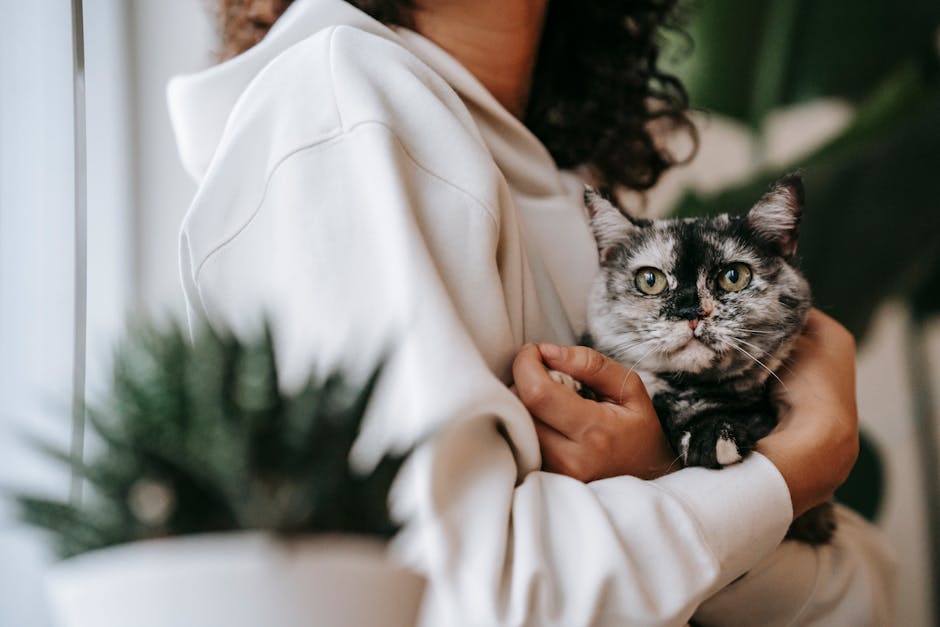
Cats are known for their independent nature and aloof behavior, but when their owner is in distress, they often exhibit surprising displays of empathy. One way they show their concern is by seeking physical proximity to their crying owner.
When a cat senses its owner's tears or distress, it may approach with caution and curiosity. It might gently rub against their leg or curl up nearby, trying to comfort them with its presence. This behavior demonstrates their instinctual response to offer support and reassurance.
Seeking physical closeness serves as a way for cats to provide a sense of security and companionship during tough times. They understand that their presence can provide solace and emotional stability, even if they cannot directly alleviate their owner's sadness. By staying close, cats create a comforting atmosphere that can genuinely make their owner feel better.
It's important to note that not all cats may react in the same way. While some may readily approach their crying owner, others may be more reserved or hesitant. Each cat has its unique personality and way of expressing compassion. Regardless of their approach, the intention behind seeking physical proximity remains the same - to show support and offer comfort.
Overall, the fact that cats seek physical closeness when their owner cries speaks volumes about the depth of their emotional connection. It is a heartwarming reminder of the bond between humans and their feline companions. Next time you find yourself in tears, pay attention to your cat's response - their presence can make all the difference in the world.
Vocalizations and purring: Examining how cats use sounds to console (6)
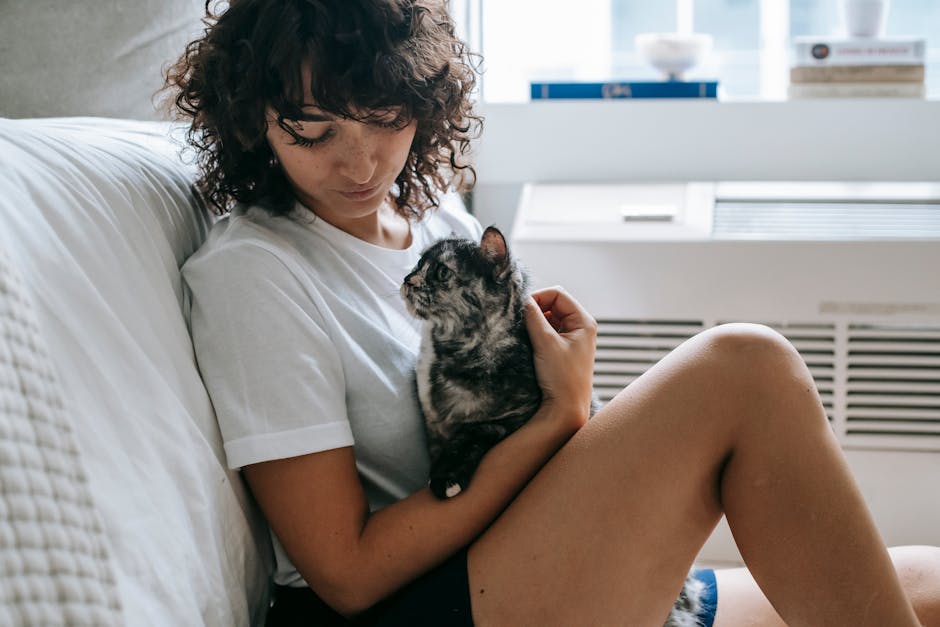
Cats are known to be keen observers of human emotions, and when a cat senses its owner in distress, it often responds in fascinating ways. One aspect of their response is through vocalizations and purring. By examining how cats use sounds to console, we can gain insights into their unique communication skills and the bond they share with their owners.
When a cat encounters a crying owner, it may approach them with a gentle purr. Purring is a well-known way for cats to express contentment, but it can also serve as a form of comfort. The vibrations created during purring have a calming effect on both the cat and the person in distress. This instinctual response may be a way for cats to offer emotional support and console their owners during difficult times.
In addition to purring, cats may use various vocalizations to communicate their presence and empathy. They may emit soft meows or chirping sounds, which can be interpreted as a way to offer comfort or assistance. Cats have diverse vocal repertoires, and each cat may have its own unique way of expressing empathy. These vocalizations can effectively convey that the cat is attentive and aware of the owner's emotional state.
It is essential to note that not all cats may respond the same way to a crying owner. Personality and individual preferences play a significant role in determining their specific response. While some cats may actively approach and try to console their owners, others may choose to observe from a distance or find alternative ways to offer support, such as rubbing against the person's leg or bringing them a favorite toy.
Understanding how cats use vocalizations and purring to console their owners is a testament to their empathy. While they may not be able to understand the reason for their owner's tears, cats instinctively recognize distress and attempt to offer solace in their own unique way. This exceptional bond between cats and their owners showcases the incredible emotional intelligence of these animals.
In conclusion, the vocalizations and purring exhibited by cats when confronted with a crying owner shed light on their innate ability to console and provide emotional support. Their calming purrs and gentle sounds serve as a testament to the depth of their bond with their owners. By recognizing and appreciating these communication cues, we can foster stronger connections with our feline friends and further understand the extraordinary ways in which they comfort us during our vulnerable moments.
Gentle touches: The role of pawing, nudging, or head bumps in consoling (7)
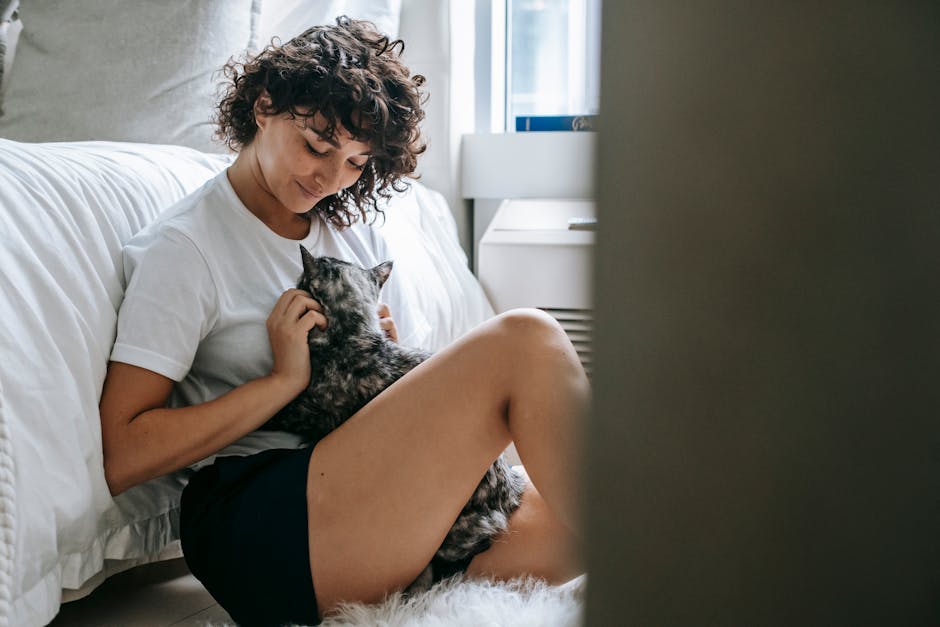
Gentle touches: The role of pawing, nudging, or head bumps in consoling
When it comes to understanding the emotional needs of their owners, cats can surprise us with their innate ability to offer comfort and solace. One way they express their concern is through gentle touches like pawing, nudging, or head bumps. While these actions may seem simple, they hold a significant role in consoling their distressed owners.
Firstly, pawing is a natural instinct for cats, often associated with showing affection or seeking attention. When a cat notices their owner in distress, they may extend their paws and gently tap or knead their owner's legs or lap. This physical contact not only serves as a way to draw attention but also releases soothing endorphins in both the cat and the owner. The repetitive motion of pawing can create a calming effect, providing a sense of comfort during times of emotional turmoil.
Nudging is another physical gesture frequently observed in cats when their owners are upset. Cats may use their noses to gently bump against their owner's face or hand. This behavior can be seen as a form of reassurance, as the cat tries to establish a connection and communicate their support. Nudging allows the cat to convey empathy and understanding, reminding their owner that they are not alone in their feelings.
Head bumps, also known as bunting, is a unique behavior in felines that signifies trust and friendship. When a cat rubs their head or cheeks against their owner, they are essentially leaving their scent, which is a way of marking their territory and showing affection. During moments of distress, cats may intensify this gesture as a means to provide comfort and reassurance. The act of a gentle head bump can create a sense of security, reminding the owner of the bond they share with their feline companion.
It is important to note that not all cats may exhibit these specific behaviors in response to a crying owner. Each cat has its own unique personality and way of expressing emotions. However, for many cats, gentle touches like pawing, nudging, or head bumps can be powerful tools of consoling their distressed owners.
In times of sadness or distress, being open to the comfort and support that our feline friends can provide can be incredibly beneficial. Observing and appreciating the subtle gestures of pawing, nudging, or head bumps can deepen the bond between a cat and their owner, reminding us all of the unconditional love and empathy that exists in the animal kingdom.
Offering affection: Cats expressing empathy through cuddling or grooming (8)
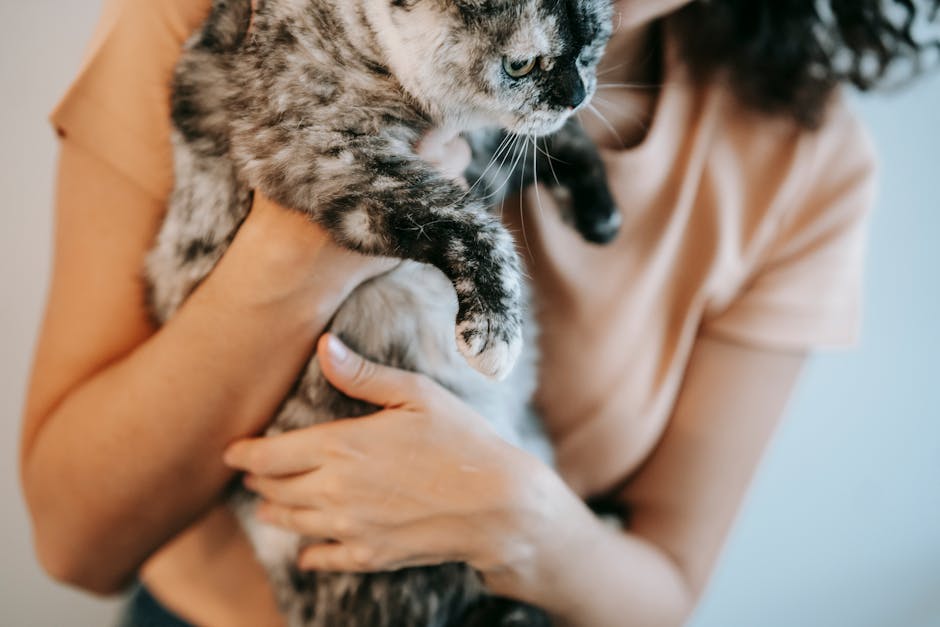
It is often said that pets have a unique ability to sense and respond to their owners' emotions. Cats, with their independent nature, may not always show it in obvious ways, but they too can display empathy towards a crying owner. One of the ways cats offer affection and comfort is through cuddling or grooming.
When a cat sees its owner crying or upset, it may approach them with a gentle touch or rub against their legs. This is their way of trying to offer comfort and support. Cats have a natural tendency to seek warmth and closeness, and when they see their favorite human in distress, they instinctively try to provide solace through physical contact.
Cuddling is not the only way cats show empathy. Another common behavior is grooming. Cats are known for their meticulous grooming habits, and they extend this behavior to their owners as a gesture of care and reassurance. They may start licking their owner's hair, face, or hands, as if trying to console them and alleviate their pain.
Research suggests that grooming has a calming effect on cats themselves, and they may use this behavior to help themselves cope with stress or anxiety. By grooming their owners, they may also transfer that sense of comfort and relaxation, hoping to soothe their distressed human.
It is important to note that not all cats will react the same way to a crying owner. Their responses can vary depending on their personality and individual experiences. Some cats may be more inclined to offer physical affection, while others may prefer to stay close by, keeping a watchful eye on their owner or offering silent support from a nearby perch.
In conclusion, cats have an innate ability to detect and respond to their owners' emotional states. While they may not display empathy in the same way as humans do, they often express their concern through affectionate behaviors like cuddling and grooming. So, the next time you find yourself in tears, take comfort in knowing that your feline friend may be there to offer their unique brand of comfort and support.
Providing a calming presence: How cats may sit nearby or lie down with their owner (9)

Cats are known for their ability to sense and respond to their owners' emotions, including when their owners are upset or crying. In these moments, cats often provide a calming presence by sitting nearby or even lying down with their owners.
When a cat notices their owner in distress, they may approach them with a gentle manner, showing concern through their body language. Many cats will lean in closer, purr softly, and gently rub against their owner's legs or sit by their side. Some cats may even curl up next to their owner, offering warmth and comfort.
The act of sitting or lying down next to their crying owner serves multiple purposes for cats. Firstly, it allows them to establish physical contact, which can create a sense of reassurance and security. The soothing vibrations emitted by a cat's purring can have a calming effect on their owner's emotional state, promoting relaxation and reducing stress.
Moreover, by staying close to their crying owner, cats demonstrate their empathy and desire to provide support. They are incredibly attuned to human emotions and can sense distress through subtle cues such as tone of voice or body language. Cats have a remarkable ability to gauge the needs of their owners and respond accordingly.
In addition to the physical and emotional comfort they provide, cats' presence can also distract their owners from their distress. Gently stroking or petting a cat while crying can help shift focus and redirect negative emotions, providing a momentary reprieve from the pain or sadness.
While each cat's reaction may vary based on their individual temperament and the bond they share with their owner, it is evident that cats have an innate ability to recognize and respond to their owner's emotions. Their calming presence, demonstrated through sitting nearby or lying down, can help provide solace during challenging times.
Next time you find yourself feeling emotional, pay attention to your cat's behavior. They may just be trying to offer their support and remind you that you are not alone. In a world that can sometimes feel chaotic, having a furry companion by your side can make all the difference.




